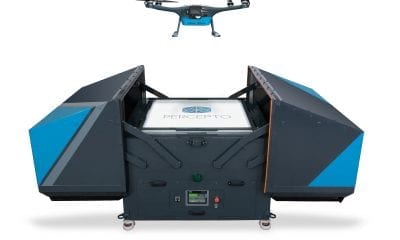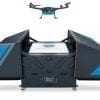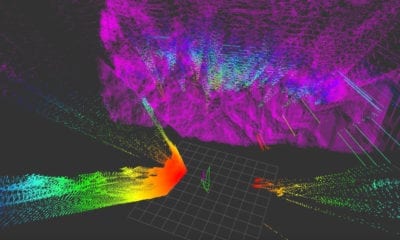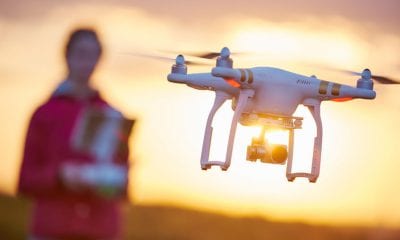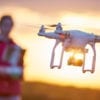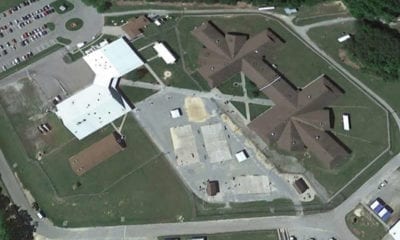IoT
Internet of Drones Authentication Models
The safety and security of authentication protocols used in the Internet of Drones (IoD) technology is an active area of research since it is of utmost importance that known attacks aimed at interfering with user authentication and data transmission be prevented and guarded against.
Internet of Drones (IoD) is a technology that derives its concept from the Internet of Things (IoT) in that it helps users to access real-time data from a group of coordinated drones that are used in various applications such as search and rescue, and package delivery. A safe and secure mode for the authentication of users who access the server is required to protect against known attacks. However, increased security also brings forth communication and computation overheads. Therefore, selecting and developing effective authentication protocols requires the balancing of all of these factors.
A research paper, ‘Authentication protocols for the internet of drones: taxonomy, analysis and future directions‘, has been published by Mohammad Wazid of the Innopolis University in Russia, Ashok Kumar Das of the International Institute of Information Technology in India, and Jong-Hyouk Lee of the Sangmyung University of South Korea.
So what did they do in this paper? What is their contribution to the knowledge in this field?
Broadly speaking, the authors first discuss an authentication model used in the IoD communication. Then they discuss some security challenges and requirements for the IoD environment. A taxonomy of various security protocols in the IoD environment is also discussed. Then they emphasize on the study of some recently proposed user authentication schemes for the IoD communication.
A detailed comparative study is done based on functionality features, security attacks, and also communication and computation costs. Through a rigorous comparative study of the existing schemes, they have identified the strengths and weaknesses of the user authentication schemes for the IoD communication. In the end, they have identified some of the challenges for the IoD that need to be addressed in the coming future.
Since most of the applications using the drones in the Internet of Drones (IoD) environment are real-time based applications, the users (external parties) usually have their interest in getting real-time services from the deployed drones belonging to a particular fly zone.
To address this important issue, there is a great need of an efficient and secure user authentication approach in which an authorized user (for example, a driver of an ambulance) in the IoD environment can be given access to the data directly from an accessed drone.
Since the communication between the entities are wireless in nature, several security and privacy related threats arise in the IoD environment. Hence, different kinds of attacks such as replay, man-in-the-middle, impersonation, privileged insider, and password guessing are then possible in the IoD environment. This demands a secure authentication system that also takes care of computation and communication overheads at the user, server and the drone sides.
The authors enlist some of the authentication protocols used for the IoD-related environment. These include schemes presented by Turkanovic et al. (2014), Farash et al. (2016), Challa et al. (2017) and Won et al. (2017) which are reviewed and analyzed.
In the comparative study, the comparisons made are based on several factors. The first one used is that of communication overheads for which the identity, random number/nonce, hash output and timestamp are specified. The next one used is the computation overheads, for which the authors have compared the time needed for executing one-way hash function, ECC-point (scalar) multiplication, fuzzy extractor function, symmetric-key encryption and decryption. Finally, security and functionality features are compared as the third criteria for evaluation. The results from each of these comparisons are presented in tables and the better schemes for each criteria are highlighted in the body of the text.
A number of challenges are identified that need to be tackled in future research. The authors posit that designing secure authentication schemes is a major challenge, since the current models used provide the heuristic security analysis which makes the schemes vulnerable to various known attacks.
Encryption of audit logs is also something that can be leveraged, and this involves the drone saving encrypted data in its system which can be retrieved and investigated later to uncover information regarding possible breaches in security.
The development of efficient solutions for intrusion detection and prevention is also a challenge since some malicious attacks still do not have effective barriers. At the same time, the huge amount of data generated by the group of drones also needs an effective data aggregation technique that can encrypt and transmit all the data.
Citation: Wazid, M., Das, A.K. & Lee, JH. J Ambient Intell Human Comput (2018). https://doi.org/10.1007/s12652-018-1006-x


